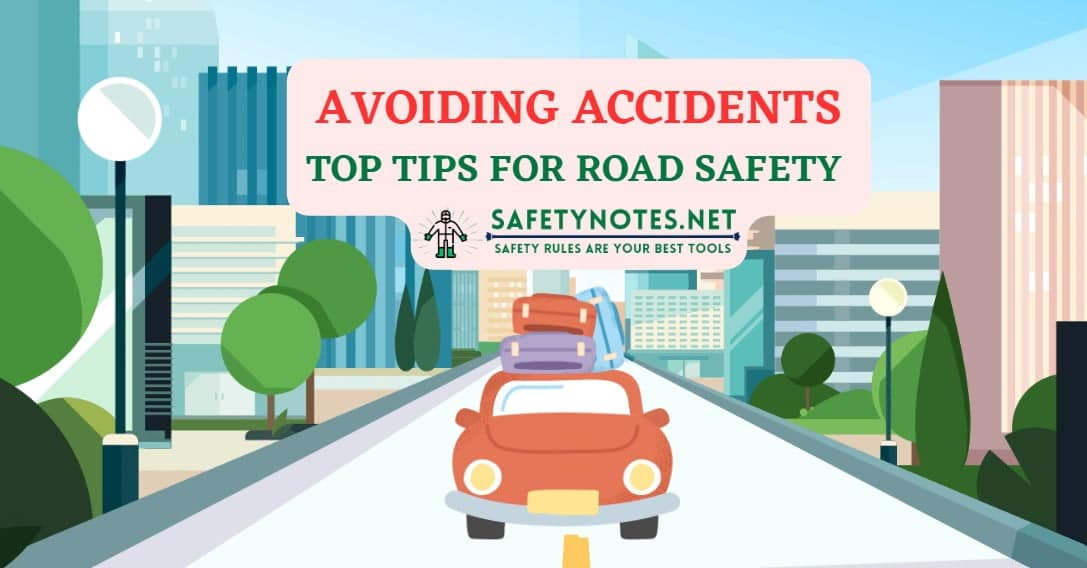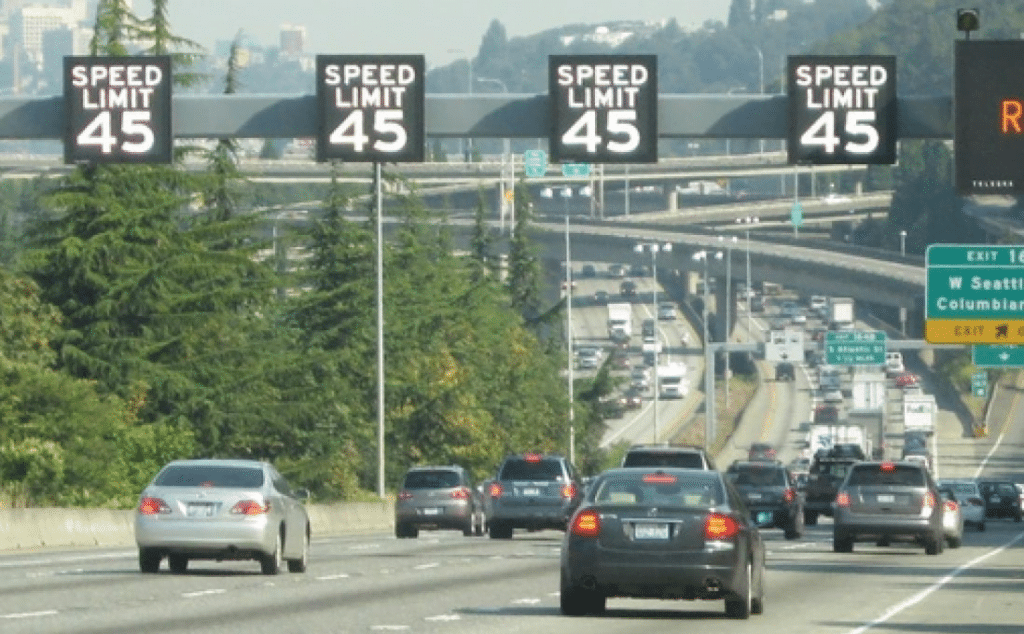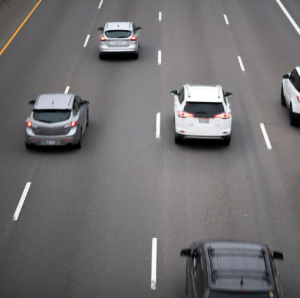
Introduction
Road accidents are a significant global concern that affects the lives of millions every year. To address this issue, road safety becomes paramount to ensure the well-being and security of drivers, passengers, and pedestrians alike. This article aims to provide top tips for avoiding accidents and promoting road safety. By staying focused, observing speed limits and traffic signs, maintaining a safe distance, using signals and mirrors effectively, and practicing defensive driving, individuals can reduce the risk of accidents and create safer road environments for everyone.
Background on road accidents and importance of road safety

Road accidents are a widespread global concern that result in countless injuries and fatalities every year. The consequences of these accidents extend beyond the individuals involved, affecting families, communities, and economies. Road safety plays a crucial role in preventing accidents and minimizing their impact. By following road safety rules and adopting safe driving practices, individuals can reduce the risk of accidents and create a safer environment for everyone on the road. It is vital to raise awareness about road safety and prioritize its importance to ensure the well-being of all road users.
Overview of top tips for avoiding accidents
To mitigate the risk of accidents, it is essential to follow certain guidelines and practices. Some top tips include staying focused and avoiding distractions while driving, observing speed limits and traffic signs, maintaining a safe distance from other vehicles, using signals and mirrors effectively, and practicing defensive driving. These tips aim to enhance awareness, communication, and proactive driving behaviors, ensuring a safe and secure road experience. By implementing these strategies, individuals can significantly reduce the likelihood of accidents and protect themselves and others on the road.
Stay Focused and Avoid Distractions
Staying focused while driving is essential for road safety. To avoid distractions, drivers should refrain from using their phones, adjusting the radio, or engaging in other activities that take their attention away from the road. It is crucial to keep both hands on the steering wheel and focus on the traffic ahead. By eliminating distractions, drivers can maintain their awareness of the road and react to potential hazards in a timely manner, reducing the risk of accidents.
Tips for staying focused while driving
- Minimize distractions: Avoid using your phone, adjusting the radio, or engaging in other activities that take your attention away from the road.
- Keep both hands on the steering wheel: Maintain proper hand placement to ensure control and responsiveness while driving.
- Practice mindfulness: Stay present and focused on the task of driving, keeping your mind from wandering or engaging in unrelated thoughts.
- Avoid fatigue: Get enough rest before embarking on a long drive to prevent drowsiness and maintain alertness throughout the trip.
- Take breaks when needed: If you find yourself becoming tired or losing focus, pull over to a safe area and rest before continuing your journey.
Importance of avoiding distractions such as phone use

Avoiding distractions, especially phone use, is crucial for road safety. Engaging in activities like texting or talking on the phone while driving can significantly increase the risk of accidents. These distractions divert the driver’s attention from the road and impair their ability to react to potential hazards. By avoiding phone use and other distractions, drivers can maintain their focus on the road, reducing the chances of accidents and promoting safer driving practices. Prioritizing road safety over phone use can save lives and prevent serious injuries on the road.
Observe Speed Limits and Traffic Signs
Obeying speed limits and adhering to traffic signs is essential for ensuring road safety. Speed limits are put in place to control the flow of traffic and reduce the risk of accidents. It is important to stay within the designated speed limit to maintain control of the vehicle and have enough time to react to potential hazards. Traffic signs provide important information about road conditions, directions, and potential dangers ahead. Ignoring or disregarding traffic signs can lead to confusion, accidents, and endanger other road users. Always be vigilant and follow the prescribed speed limits and traffic signs to enhance road safety.
Importance of following speed limits and traffic signs

Following speed limits and traffic signs is crucial for road safety. Speed limits are designed to regulate the flow of traffic and reduce the risk of accidents. They ensure that drivers are able to maintain control of their vehicles and have enough time to react to potential hazards. Traffic signs provide important information about road conditions, directions, and potential dangers ahead. By obeying these signs, drivers can navigate the roads safely and avoid potential collisions. Following speed limits and traffic signs is a responsibility that all drivers should prioritize to ensure the safety of themselves and others on the road.
Tips for maintaining a safe speed and understanding traffic signs
- Observe speed limits: Always follow posted speed limits to ensure that you are driving at a safe and appropriate speed for the road and conditions. Speeding increases the risk of accidents and reduces your ability to react to unexpected situations.
- Adjust your speed to match the conditions: If the weather is bad or visibility is poor, reduce your speed to a level that is safe and allows you to maintain control of your vehicle.
- Stay aware of speed limit changes: Pay attention to speed limit signs and adjust your speed accordingly. Speed limits can change frequently, especially in residential areas, school zones, and construction zones.
- Understand traffic signs: Familiarize yourself with the different traffic signs and their meanings. This will help you anticipate upcoming hazards, navigate intersections, and follow road directions.
- Pay attention to special signs and warnings: Look out for signs that indicate sharp turns, steep inclines, pedestrian crossings, and other potential hazards. These signs are designed to keep you safe and inform you about the road ahead.
- Follow the instructions of traffic signs: Obey traffic signs such as stop signs, yield signs, and traffic lights. Ignoring these signs can lead to accidents and put yourself and others at risk.
- Keep an eye out for temporary signs: Be aware of any temporary signs indicating roadwork, detours, or closures. Follow the instructions on these signs and adjust your speed and route accordingly.
By following these tips, you can maintain a safe speed and understand the meaning of traffic signs, allowing you to travel safely and avoid accidents on the road.
Maintain a Safe Distance

Maintaining a safe distance from other vehicles is crucial for road safety. Drivers should aim to keep a sufficient distance between their vehicle and the vehicle in front of them. This provides a buffer zone in case of sudden stops or emergencies. The recommended guideline is the “3-second rule,” which means maintaining a three-second gap between your vehicle and the one ahead. This allows enough time to react and avoid collisions. By maintaining a safe distance, drivers can reduce the risk of rear-end accidents and ensure safer road travel.
Tips for maintaining a safe distance from other vehicles
- Implement the “3-second rule” by maintaining a minimum of three seconds gap between your vehicle and the one ahead. This allows enough time to react in case of sudden stops or emergencies.
- Adapt your following distance based on road conditions, weather, and traffic congestion. Increase the distance in adverse conditions or heavy traffic.
- Avoid tailgating other vehicles by leaving a safe cushion of space. This reduces the chances of rear-end collisions.
- Maintain a consistent speed to ensure a stable and predictable driving pattern.
- Adjust your distance according to the speed of the vehicles around you. Increase the gap at higher speeds to allow for longer reaction times.
By following these tips, drivers can ensure a safe distance from other vehicles, reducing the risk of accidents and providing a buffer zone for emergencies.
Explanation of the 3-second rule and its significance
The 3-second rule is a guideline for maintaining a safe distance between your vehicle and the one ahead. It suggests that you should maintain a minimum of three seconds gap, which allows enough time for you to react in case of sudden stops or emergencies. By following this rule, you create a buffer zone that gives you sufficient time to brake or maneuver safely. This practice significantly reduces the risk of rear-end collisions and provides a safer driving experience for everyone on the road.
Use Signals and Mirrors Effectively

When it comes to road safety, using signals and mirrors effectively is crucial. Drivers should use their turn signals to communicate their intentions to other drivers, whether they plan to change lanes or make a turn. Mirrors should be regularly checked to maintain awareness of surrounding vehicles. Proper signaling and mirror usage enhance safety by reducing confusion and allowing for better anticipation of other drivers’ actions. By incorporating these practices, drivers can significantly reduce the risk of accidents and promote overall road safety.
Tips for using signals and mirrors to communicate with other drivers
- Use your turn signals: Always use your turn signals to communicate your intentions to other drivers. Whether you plan to change lanes or make a turn, signaling in advance allows other drivers to anticipate your actions and adjust their driving accordingly.
- Check your mirrors regularly: Regularly check your mirrors to maintain awareness of surrounding vehicles. This helps you stay updated on any potential hazards or changes in traffic patterns. By being diligent in checking your mirrors, you can make more informed decisions while driving.
- Be clear and decisive: When using signals, be clear and decisive in your movements. Use your signals in a timely manner and make sure they are visible to other drivers. Additionally, make sure to cancel your signals once you have completed your intended turn or lane change.
- Be mindful of blind spots: Remember that mirrors have blind spots, so it’s essential to physically check over your shoulder before making any maneuver. This extra precaution can help you spot any vehicles that may be in your blind spots and avoid potential collisions.
- Use signals even when pedestrians are present: Using your signals is not only important when driving around other vehicles but also when pedestrians are present. Signaling your intentions can help pedestrians anticipate your movements and safely cross the road.
- Courtesy goes a long way: Finally, be courteous and considerate when using signals and mirrors. Use them to communicate your intentions in a calm and respectful manner. This promotes a safer driving environment by reducing confusion and promoting better communication between drivers.
By implementing these tips, you can effectively use signals and mirrors to communicate with other drivers, enhance safety, and reduce the risk of accidents on the road.
Importance of proper signaling and mirror usage
Proper signaling and mirror usage are crucial for road safety as they help drivers communicate their intentions to other road users. Signaling allows drivers to inform others of their planned maneuvers, such as lane changes or turns, promoting smoother traffic flow and reducing the risk of collisions. Mirrors provide drivers with essential visibility of their surroundings, including blind spots, enabling them to make informed decisions while driving. By emphasizing proper signaling and mirror usage, drivers can significantly enhance their own safety and contribute to a safer road environment for everyone.
Practice Defensive Driving
Practice Defensive Driving: Defensive driving is a proactive approach to road safety that involves anticipating potential hazards and taking appropriate actions to avoid accidents. By staying alert, maintaining a safe following distance, and being mindful of other drivers, defensive drivers can reduce the risk of collisions. Some key tips for practicing defensive driving include scanning the road ahead, using mirrors frequently, and being prepared to react to unexpected situations. By implementing these strategies, drivers can greatly enhance their safety on the road and reduce the likelihood of accidents.
Explanation of defensive driving and its benefits
Defensive driving is a proactive approach to road safety that involves anticipating potential hazards and taking appropriate actions to avoid accidents. It requires being alert and constantly scanning the road ahead, using mirrors frequently, and being prepared to react to unexpected situations. By practicing defensive driving, drivers can greatly enhance their safety on the road and reduce the likelihood of accidents. Benefits of defensive driving include reducing the risk of collisions, minimizing injuries, and potentially saving lives. It promotes a safer and more responsible driving culture overall.
Tips for anticipating and responding to potential hazards on the road
- Keep a lookout for any obstacles on the road, such as potholes, debris, or loose animals, and be prepared to take evasive action if necessary.
- Pay attention to the behavior of other drivers, especially if they are driving recklessly or aggressively. Maintain a safe distance from these vehicles and be prepared for sudden maneuvers.
- Be aware of weather conditions and adjust your driving accordingly. Slow down and maintain a safe following distance in rainy, snowy, or foggy conditions.
- Anticipate the actions of pedestrians and cyclists, especially in urban areas or near schools. Slow down at intersections and be prepared to yield the right of way.
- Always use your mirrors and check blind spots before changing lanes or making turns. Signal your intentions clearly to communicate with other drivers and reduce the risk of collisions.
- Follow the rules of the road, such as stopping at red lights and obeying traffic signs and signals. This will help you anticipate the actions of others and ensure a safer driving environment.
By adopting these tips and practicing defensive driving, you can minimize the risks posed by potential hazards on the road and increase your chances of arriving safely at your destination.
Conclusion
In conclusion, implementing these top tips for road safety is crucial for avoiding accidents and ensuring a safe journey. By staying focused and avoiding distractions, observing speed limits and traffic signs, maintaining a safe distance from other vehicles, using signals and mirrors effectively, and practicing defensive driving, individuals can greatly reduce their risk of getting into accidents. It is important to prioritize road safety and make these tips a part of everyday driving habits to protect oneself and others on the road.
Summary of key tips for road safety
In summary, implementing these top tips for road safety is crucial for avoiding accidents and ensuring a safe journey. By staying focused and avoiding distractions, observing speed limits and traffic signs, maintaining a safe distance from other vehicles, using signals and mirrors effectively, and practicing defensive driving, individuals can greatly reduce their risk of getting into accidents. It is important to prioritize road safety and make these tips a part of everyday driving habits to protect oneself and others on the road.
Importance of implementing these tips to avoid accidents
Implementing these top tips for road safety is crucial for avoiding accidents and ensuring a safe journey. By staying focused and avoiding distractions, observing speed limits and traffic signs, maintaining a safe distance from other vehicles, using signals and mirrors effectively, and practicing defensive driving, individuals can greatly reduce their risk of getting into accidents. It is important to prioritize road safety and make these tips a part of everyday driving habits to protect oneself and others on the road.


